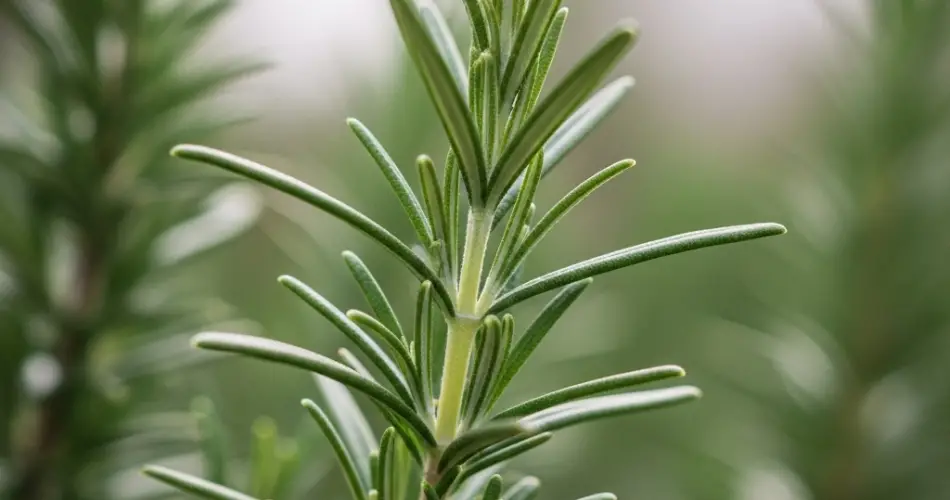Rosemary is a hardy, fragrant herb that thrives in sunny, well-drained conditions, making it a staple in many herb gardens. Its drought tolerance, resilience, and compatibility with other Mediterranean plants make it an ideal candidate for companion planting. If you’re planning to grow rosemary alongside other Mediterranean herbs like thyme, oregano, sage, and lavender, it’s essential to understand their shared needs and subtle differences to create a thriving herb garden.
Understand Mediterranean Growing Conditions
The key to successfully growing rosemary with other Mediterranean herbs lies in replicating their native habitat. These herbs originate from rocky, sun-drenched coastal regions with well-draining soil and minimal rainfall. They all prefer full sun exposure—at least six hours a day—and dislike wet or poorly drained soil, which can quickly lead to root rot.
In short, a Mediterranean-style herb garden should offer:
-
Full sun (6–8 hours daily)
-
Sandy or rocky, well-drained soil
-
Minimal watering
-
Good air circulation
Selecting Compatible Herbs
Rosemary gets along well with many other Mediterranean herbs, especially those that have similar watering and soil needs. Consider planting rosemary with the following:
-
Thyme: A low-growing herb that thrives in dry, sunny locations and doesn’t compete with rosemary for root space.
-
Oregano: Another sun-loving herb that flourishes in dry, rocky soil. It tends to sprawl, so give it space.
-
Sage: Prefers well-drained soil and moderate spacing to avoid overcrowding.
-
Lavender: Pairs beautifully with rosemary in both appearance and care needs.
-
Marjoram: A softer cousin of oregano that shares similar conditions.
Avoid planting rosemary with herbs that prefer more moisture and richer soil, such as basil, parsley, or cilantro. These plants will struggle in the drier environment rosemary needs.
Designing Your Herb Garden
When planning your layout, consider each herb’s growth habits. Rosemary can grow into a woody shrub if left untrimmed, reaching several feet in height and width. Place it at the back or center of your garden bed if it’s the tallest plant. Shorter, spreading herbs like thyme or oregano make excellent border plants.
Space your herbs to ensure airflow and reduce the risk of fungal diseases. Overcrowding can create a damp, shaded microclimate that is detrimental to Mediterranean herbs.
Soil Preparation and Drainage
Well-drained soil is critical. If your native soil is heavy or clay-like, amend it with coarse sand, gravel, or perlite to improve drainage. Raised beds and containers are also excellent choices for Mediterranean herbs, especially in areas with high rainfall or poor drainage.
A neutral to slightly alkaline pH is ideal. Adding a bit of lime to the soil can help if the pH is too acidic.
Watering Guidelines
Mediterranean herbs are drought-tolerant once established, and rosemary is particularly resistant to dry conditions. Overwatering is a common mistake. Water only when the soil is dry to the touch, and always water at the base to avoid wetting the leaves.
In mixed plantings, be sure all herbs have similar water needs. Grouping herbs by water requirements ensures none are over- or under-watered.
Fertilizing and Mulching
These herbs don’t need heavy fertilization. In fact, too much fertilizer can cause them to lose flavor and aroma. An occasional light feeding with compost or a diluted organic liquid fertilizer during the growing season is sufficient.
Avoid heavy mulching with moisture-retaining materials. Instead, use gravel or small pebbles to reflect sunlight and promote air circulation around the base of your plants.
Pruning and Maintenance
Regular pruning encourages bushier growth and prevents herbs like rosemary from becoming woody and sparse. Harvest the tips of the branches frequently, especially during the growing season, to stimulate new growth.
Prune oregano, thyme, and sage after flowering to maintain their shape and encourage regrowth. Lavender also benefits from light trimming to remove faded blooms and keep the plant tidy.
Container Gardening Option
If garden space is limited, Mediterranean herbs can be grown together in large containers. Choose a pot with good drainage holes and fill it with a well-draining soil mix. Rosemary can serve as the focal point, with trailing herbs like thyme or oregano cascading over the sides. Rotate the container regularly to ensure even sun exposure.
Pest and Disease Management
Most Mediterranean herbs are naturally resistant to pests due to their aromatic oils. However, watch out for aphids, spider mites, or powdery mildew in overly humid conditions. Promote airflow, avoid overcrowding, and use natural remedies like neem oil if needed.
Final Thoughts
Growing rosemary alongside other Mediterranean herbs is both practical and visually appealing. These sun-loving plants thrive under similar conditions and complement each other in both garden aesthetics and culinary uses. By mimicking their natural habitat with proper sunlight, well-drained soil, and minimal watering, you can enjoy a vibrant, aromatic herb garden that requires little maintenance and provides lasting rewards.



